Finding Meerkats in South Africa: What You Need To Know
Imagine this: You’re on a two-week adventure through South Africa, exploring the scenic Garden Route. You’ve already enjoyed the dramatic coastline, Cape Point, and charming towns along the way, but there’s one animal you’re particularly eager to see – the meerkat. You know they live here, but where exactly can you find meerkats in South Africa?
Well, I was on the same mission during my recent trip to South Africa. While I didn’t spot any on safari in Greater Kruger National Park or Cape Town, I knew the Garden Route offered a chance encounter. And guess what? I did my research in advance, made arrangements, and got to witness these fascinating animals up close, just outside of Oudtshoorn.
Disclaimer: This post may include affiliate links. If you click one of them, I may receive a small commission at no extra cost to you.
Where to See Meerkats in South Africa
Meerkats are native to southern Africa, and South Africa is certainly one of the best places to see them in their natural habitat. Here are some popular spots:
While you might encounter meerkats in other areas, these are the primary regions where you’re likely to have the best chance of spotting them. Remember, meerkats are often shy and elusive, so patience and a bit of luck are key to successful sightings.
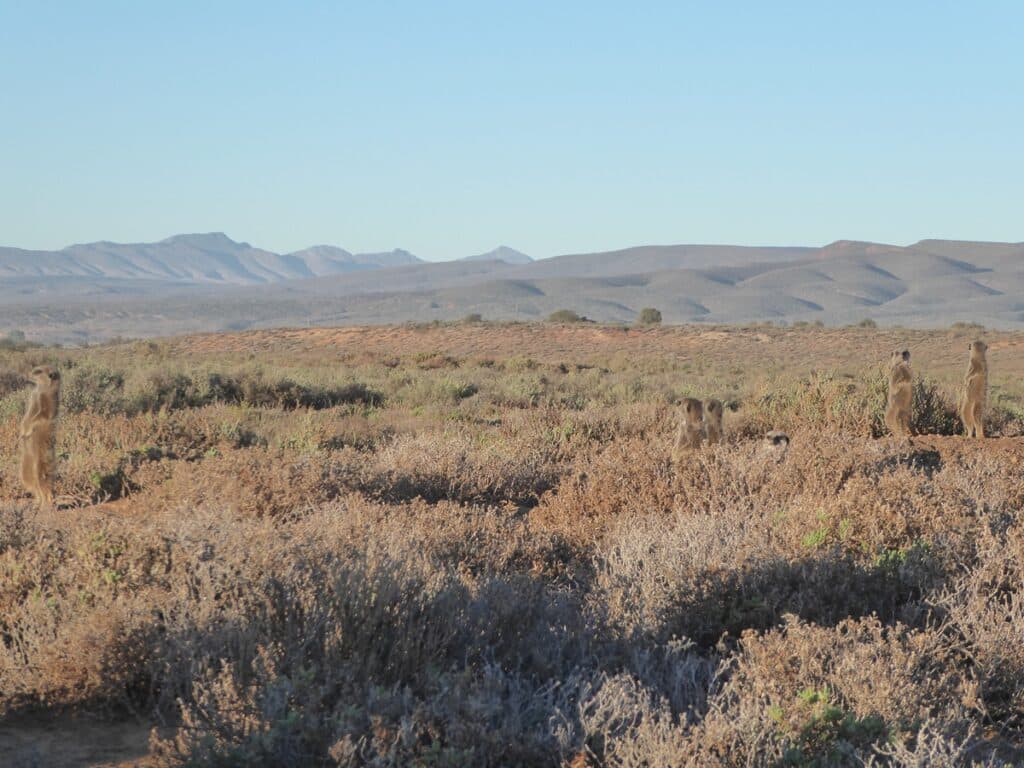
Klein Karoo (Oudtshoorn)
Oudtshoorn is located in the Klein Karoo region of South Africa. Klein Karoo is a semi-arid region known for its unique beauty and diverse ecosystems. Here’s a quick rundown of what Oudtshoorn is known for:
On the day I went to see Meerkats, I woke up early and headed out to meet my guide well before sunrise. We drove to a spot where the meerkats had been the night before. The team watches them the evening before, to see which burrows they go into for the night. We then set up our chairs and waited. It was a bit chilly before the sun rose, but it was exciting.
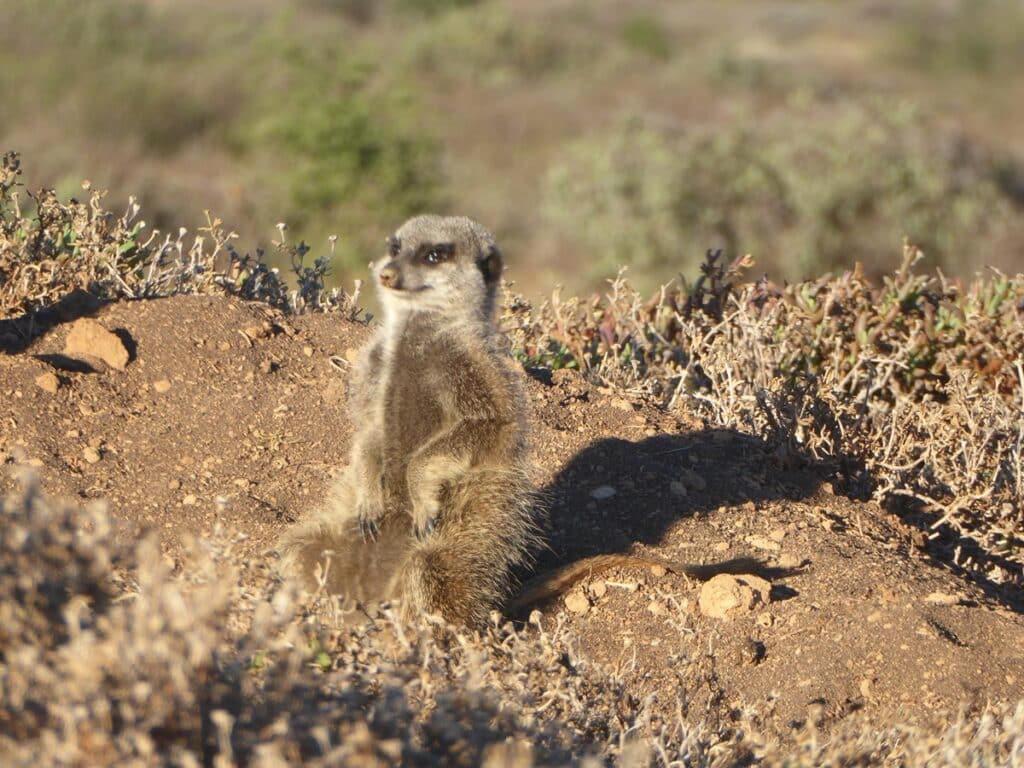
About an hour after the sunrise, the first meerkat popped out of its burrow. Then another and another, up to a total of six. They were so cute! They stretched and yawned and started their day. It was amazing to watch them hunt, play and socialize. It was an amazing experience and worth the wait.
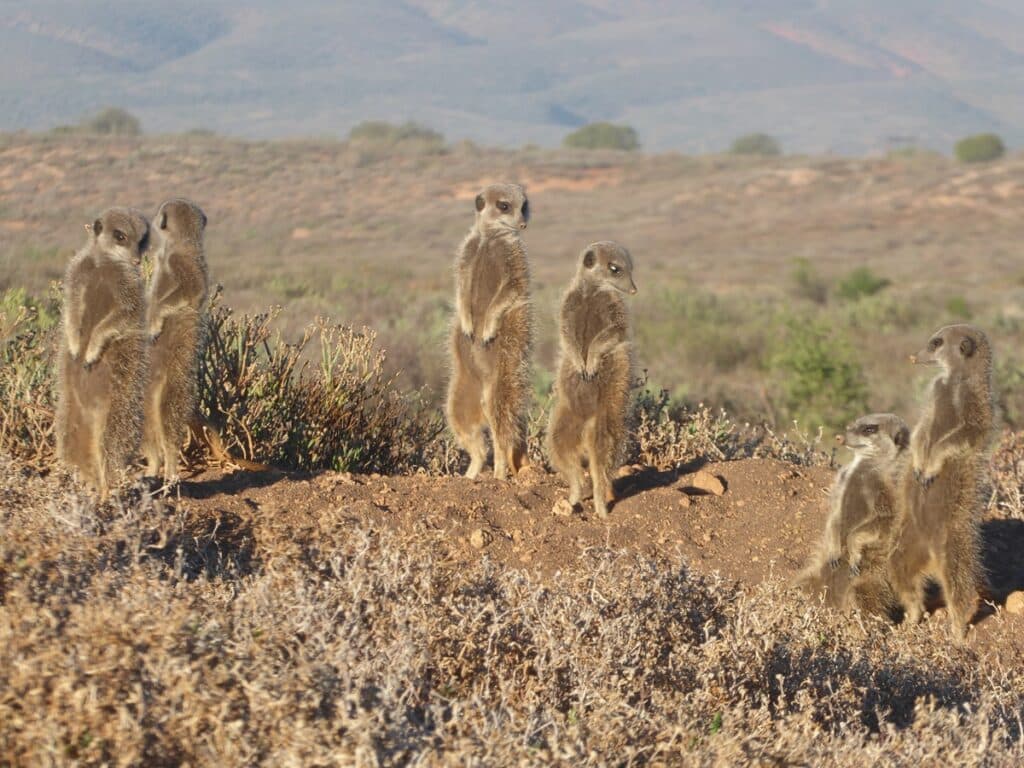
I booked my tour with Five Shy Meerkats and I highly recommend using them, as they are one of the only companies in the area that offers tours to see meerkats.
Facts About Meerkats
Social Butterflies of the Desert
Meerkats are incredibly social animals, living in large groups called mobs. These mobs can range from a few individuals to as many as 50. Within the mob, there’s a strict social hierarchy, with a dominant female at the top.
One of the most fascinating aspects of meerkat behavior is their cooperative nature. While some members of the mob are foraging for food, others take turns standing guard. These sentinels will stand upright on their hind legs, scanning the horizon for predators like eagles, snakes, or jackals. If danger approaches, they’ll sound a warning call, alerting the rest of the mob to seek shelter in their underground burrows. This cooperative behavior helps to ensure the survival of the entire group.
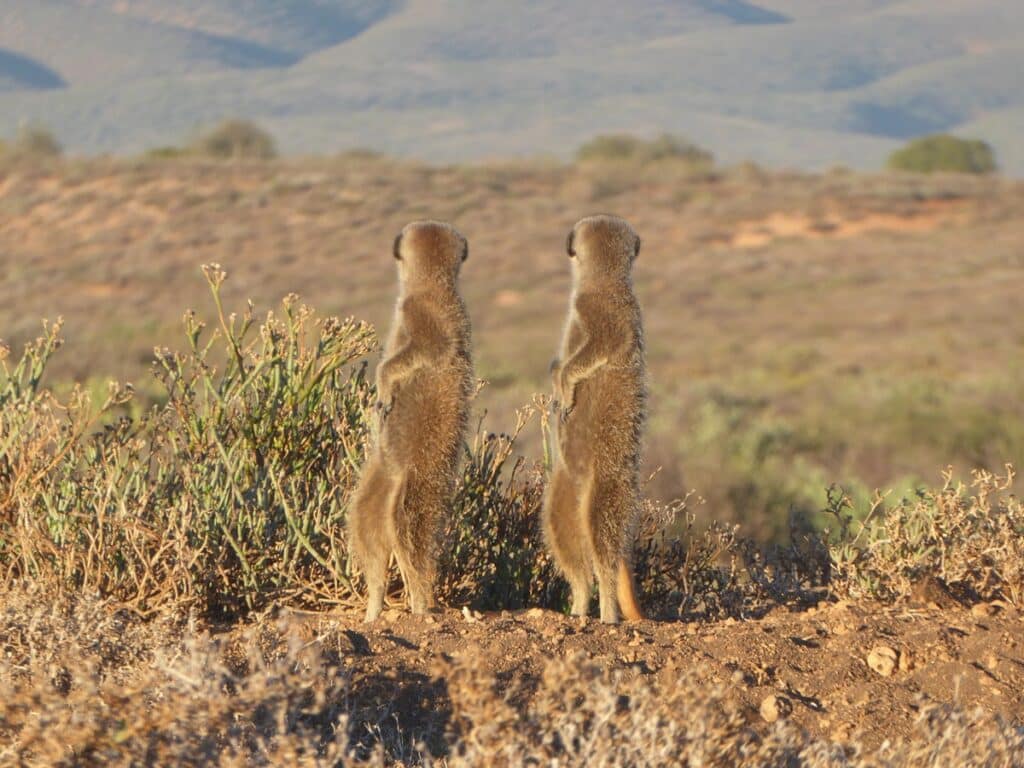
Complex Communication
Meerkats are surprisingly vocal animals, using a complex language of sounds to communicate with each other. Their calls can convey a range of messages, from warnings about predators to announcements about food sources.
One of the most common sounds is the “bark,” which is used to alert the mob to danger. A high-pitched bark typically indicates an aerial threat, such as a hawk or eagle, while a lower-pitched bark signals a ground predator, like a jackal or snake. Meerkats also use a variety of other vocalizations, including whistles, chirps, and growls, to express their emotions and intentions.
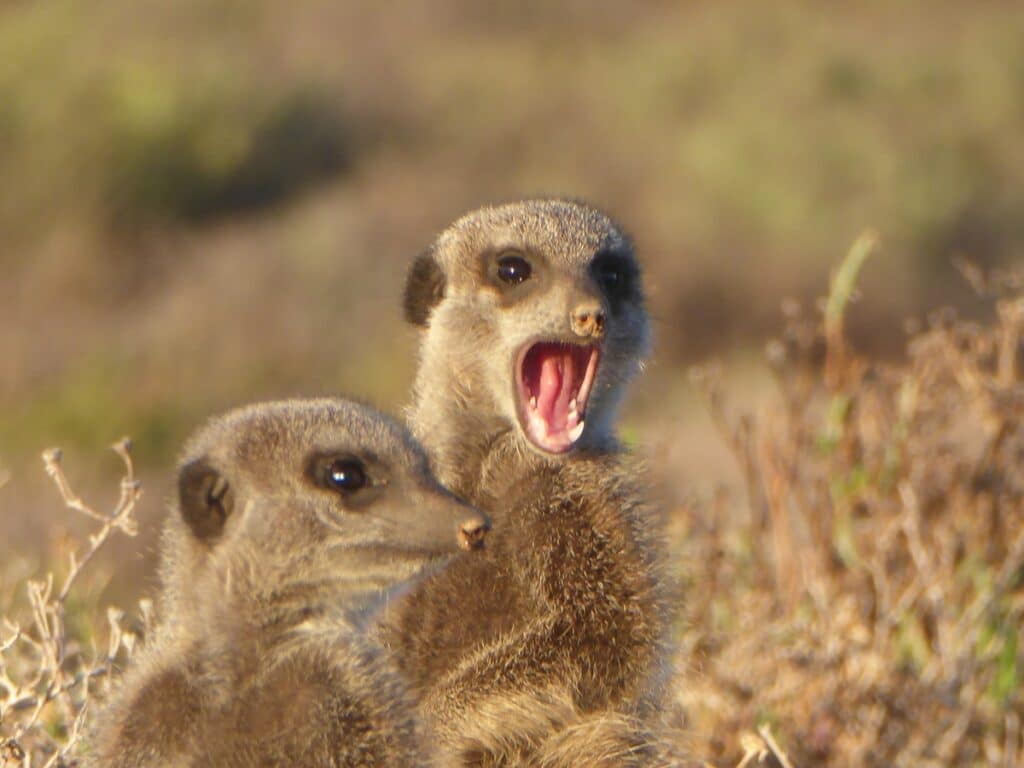
Raising the Next Generation
Meerkats are incredibly cooperative when it comes to raising their young. Only the dominant female in the mob is responsible for breeding, typically giving birth to a litter of two to five pups. However, the entire mob plays a crucial role in caring for these new arrivals.
The meerkat mob works together to protect and nurture the pups. They take turns babysitting, keeping a watchful eye on the young ones while the adult meerkats forage for food. When the pups are hungry, the adult meerkats regurgitate food, providing a nutritious meal for their offspring. This communal effort ensures the survival of the next generation of meerkats.
Meerkats are primarily insectivores, meaning they feed on insects. But their diet isn’t limited to just bugs. These resourceful creatures also enjoy snacking on spiders, scorpions, lizards, and even small birds.
With their sharp eyesight and keen sense of smell, meerkats are adept hunters. They use their powerful claws to dig into the soil, unearthing insects and other invertebrates. Their diet varies depending on the season and the availability of food. In times of scarcity, they may even resort to eating plant matter.
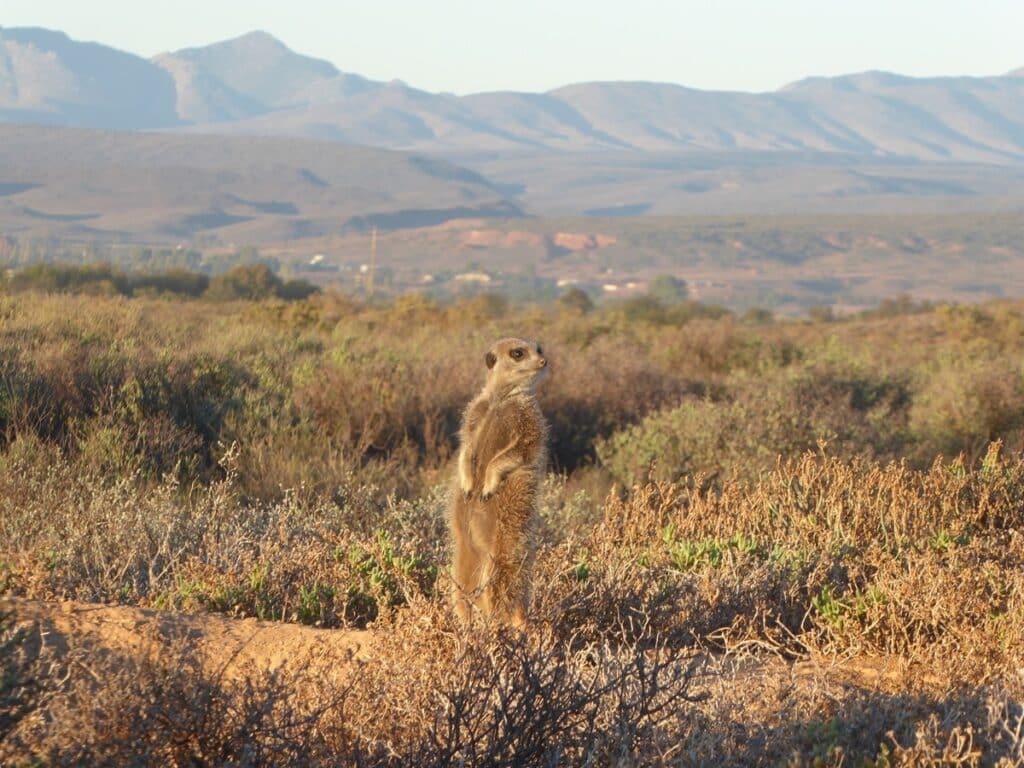
Burrowing Down: Underground Homes
Meerkats are expert burrowers, creating intricate underground networks that serve as their homes and safe havens. These burrows can have multiple entrances and tunnels, protecting them from predators and extreme weather conditions. A meerkat mob may have several burrows in their territory, which they use for different purposes, such as sleeping, nursing young, or escaping danger.
At night, the entire mob will retreat to a designated burrow, huddling together for warmth and safety. The dominant female and her pups usually occupy the central chamber, while the other members of the mob arrange themselves around them.
Threats to Meerkats
While meerkats are currently classified as “Least Concern” by the International Union for Conservation of Nature (IUCN), they still face several threats to their survival.
One of the biggest threats is habitat loss. As human populations grow and agricultural activities expand, meerkats’ natural habitat is being increasingly fragmented and destroyed. This can lead to a decline in food availability and suitable breeding sites.
Another significant threat is predation. Meerkats are preyed upon by a variety of predators, including eagles, snakes, and jackals. While their social structure and cooperative behavior provide some protection, they are still vulnerable, especially when they are young and inexperienced.
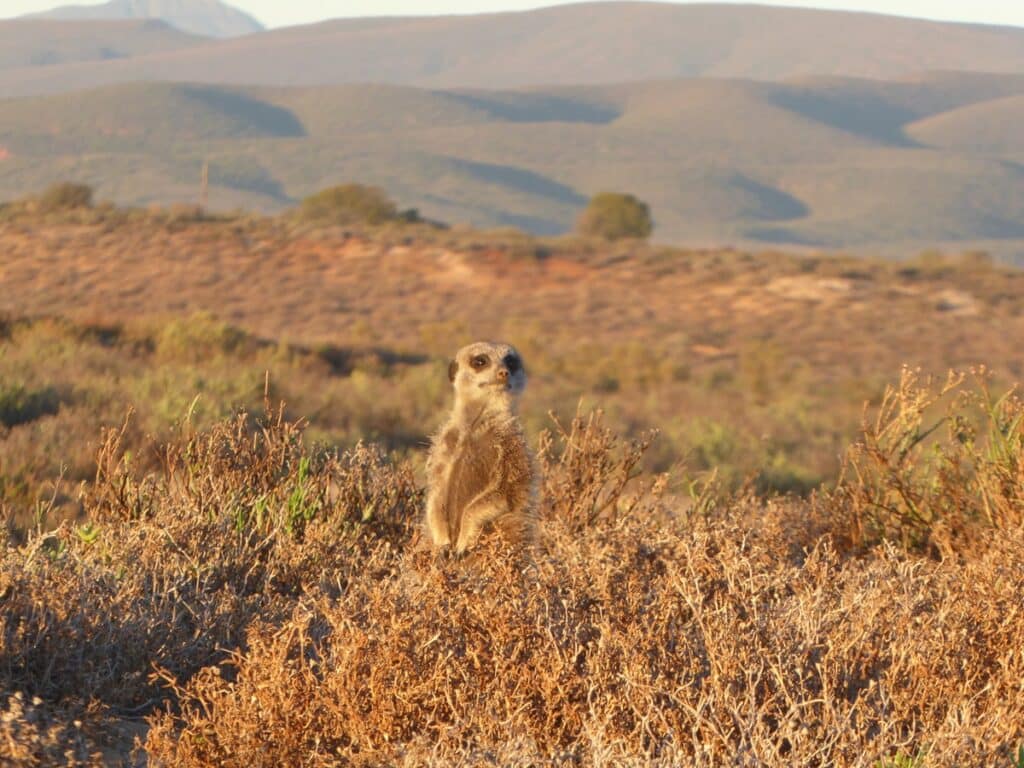
Beyond South Africa: Where Else Can You See Meerkats?
While South Africa is a popular destination for meerkat enthusiasts, these social creatures are not exclusive to this country. They can also be found in other parts of southern Africa, including:
If you’re planning a trip to any of these countries, be sure to keep an eye out for these adorable and intelligent creatures.
Witnessing the Wonder of Meerkats in South Africa
Seeing meerkats in South Africa, especially in their natural habitat is an unforgettable experience. Their playful personalities, complex social structures, and constant vigilance make them truly fascinating creatures. If you’re planning a trip to South Africa, be sure to add a meerkat encounter to your itinerary. I promise you will be captivated by these adorable creatures.
If you enjoyed my post, follow me on social media or subscribe to my newsletter below, so you can stay connected on future posts, trips, tips, and more.


